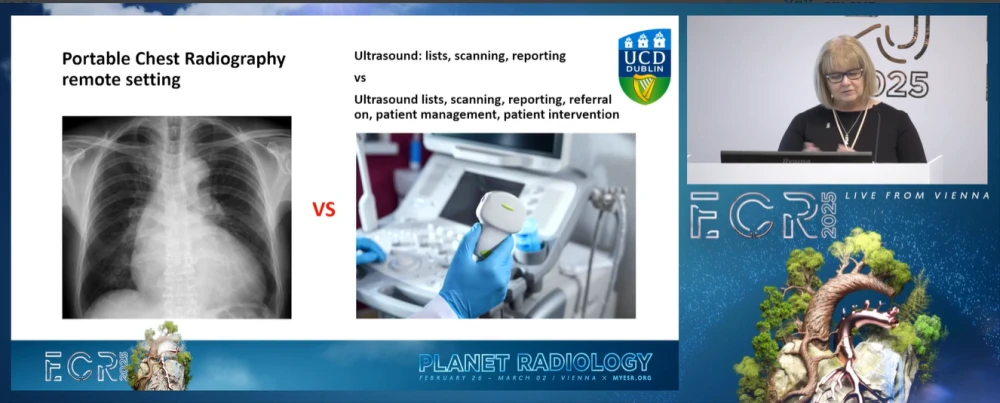The second day of the European Congress of Radiology featured discussions on advancing radiographic practice, addressing challenges in standardisation, workforce development and training. Experts examined the evolution of advanced practice, the barriers to career progression and the need for clearer frameworks to support the radiography profession.
Overcoming Challenges and Embedding Advanced Practice Within The Radiography Profession
Professor Louise A. Rainford from University College Dublin highlighted the challenges of integrating advanced practice in radiography across Europe, noting the absence of a standardised definition and the need for updated guidelines. She contrasted advanced practice in the UK, which necessitates master's level education across various domains, with enhanced practice, which expands roles without full autonomy.
Rainford traced the evolution from the outdated 2011 EFRS guidelines to the 2021 white paper, which aims for implementation by 2031. Despite this progress, she expressed concerns about the actual advancement, stating, “We are halfway there… but are we really near getting advanced practitioners across Europe?”
She emphasised the need for national frameworks, citing Ireland's alignment with UK standards, and called for clearer EFRS guidance. Rainford warned that research inconsistencies could misrepresent advanced practice and stressed the importance of precise terminology, improved education and professional regulation as vital to achieving wider integration in the field.
Advanced Practice Evolution for Allied Healthcare Professionals: The UK Perspective
Julie-Michelle Bridson, Director of the Northwest of England Imaging Training Academy, discussed the challenges of advancing radiography practice in the UK. While advanced practice roots lie in nursing, radiographers face barriers that hinder their progression.
Key issues include a regional 12% and national 15% vacancy rate, forcing radiographers to shift from reporting to image acquisition, which limits their career development. Additionally, despite government training funds, managerial hesitance due to unclear job titles and role definitions persists. Bridson noted, "We are losing staff... haemorrhaging staff left, right and centre, both into the private sector and sadly out of the profession."
She also highlighted that only 18% of advanced practice graduates are from allied health professions, with radiographers among the lowest represented. Bridson called for clearer role definitions, increased awareness of funding and structured career pathways to attract and retain talent.
While efforts to bolster the assistant practitioner workforce are ongoing, she warned that without systemic change and strategic workforce planning, career advancement opportunities for radiographers will remain limited.
Identification of Training Opportunities Required to Grow Advanced Practice Within The Radiography Profession
Andrew Keith Tootell discussed training opportunities for advancing radiographic practice in the UK, indicating the four pillars of advanced practice: clinical practice, leadership, education and research. He noted that while radiographers excel in patient care and adapting to technology, they should consider a broader focus beyond single modalities.
Tootell highlighted challenges in leadership and education, pointing out that management roles often arise naturally, while effective leadership requires intentional development. A recently introduced leadership course was well-received, reinforcing the importance of dedicated training. As Tootell noted, "Leadership isn’t just something that happens overnight." Research remains the most difficult area for many due to time constraints, but Tootell encouraged involvement through quality improvement projects and audits.
He showcased Tess, an advanced clinical practitioner, as a model for integrating patient management, education and research into radiographic practice. He concluded by underscoring the need for structured frameworks and skill gap analyses to aid career progression in healthcare.
While progress has been made in advancing radiographic practice, gaps in standardisation, leadership development and career progression remain. Clearer frameworks, strategic workforce planning and enhanced education initiatives are essential to overcoming these barriers and ensuring sustainable growth in the profession.
Source & Image Credit: ECR 2025










